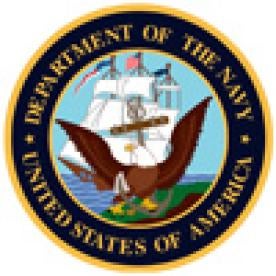On August 25, 2014, the U.S. Navy announced that it would continue its four-year collaboration with the Chilean Navy to research, develop, and use “drop-in” alternative fuels to power surface ships and aircraft. Both navies have established goals of significantly increasing their use of alternative fuels. The Chilean Navy intends to use renewable energy sources for forty-five percent of its newly installed energy capacity over the next eleven years. Similarly, the U.S. Navy hopes to satisfy fifty-percent of its energy needs with alternative energy sources by 2020. As part of this effort, the U.S. Navy has been pursuing drop-in biofuels, which are chemically indistinguishable from petroleum-derived fuels and may be used in existing ships, aircraft, and infrastructure. The U.S. Navy confirmed the viability of using drop-in biofuels during a fleet exercise in 2012 and intends to use drop-in biofuels in normal operations beginning in 2016.
The announcement of the continuing partnership between the U.S. and Chilean Navies comes shortly after the U.S. Department of Defense (“DoD”) issued its annual $3.5 billion procurement for bulk fuels for facilities located in the Eastern, Inland, and Gulf Coast Region, in which the U.S. Navy for the first time sought biofuel and petroleum blends. The procurement represents a major development in the partnership between the U.S. Navy and the U.S. Department of Agriculture (“USDA”), which was formed in 2010 after President Barack Obama called on the U.S. Navy, USDA, and the Department of Energy to facilitate the development drop-in alternative fuels. As we previously reported, the Department of Energy is independently making efforts to develop drop-in biofuel technology through its recently announced clean energy technology loan guarantee program.
The U.S. Navy is aiming to make ten percent of its purchases under the new procurement in biofuel and petroleum blends. As part of the USDA’s partnership with the U.S. Navy, the Commodity Credit Corporation offered grants to suppliers of blended products to ensure that blended products were offered at a competitive price. USDA’s role in the procurement is critical because the 2014 National Defense Authorization Act (“NDAA”) limits DoD’s ability to purchase drop-in fuels for operational purposes if the drop-in fuels are not cost-competitive with traditional fuels. The current version of the 2015 NDAA contains a similar restriction that limits DoD’s ability to purchase biofuels until the cost of biofuel is generally equal to the cost of traditional fuel, which the U.S. Navy and USDA expect to occur by 2016.
The U.S. Navy is expected to seek petroleum and biofuel blends in a second bulk-fuel procurement later this year. Through both procurements, the U.S. Navy intends to purchase up to 800 million gallons of biofuel by 2015. The U.S. Navy’s efforts could result in an expansion of the domestic capacity to produce drop-in biofuels, which is currently about 210 million gallons per year according to the U.S. Energy Information Administration.




 i
i


